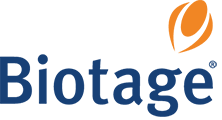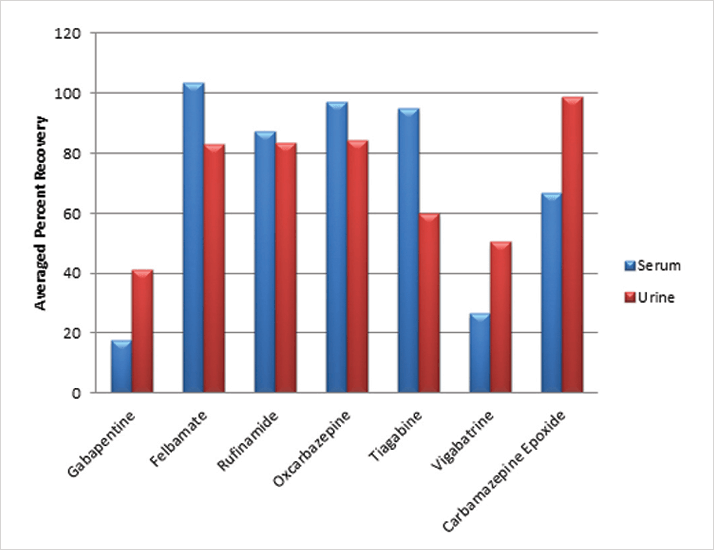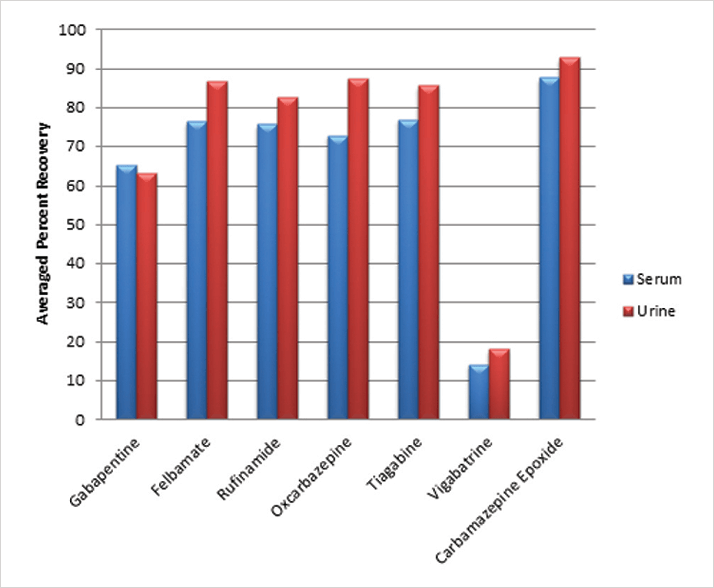Antiepileptic drugs (AED) are prescribed to suppress seizures in epilepsy patients. The ability to therapeutically monitor these drugs in patients is necessary for maintaining optimal medical care and managing any adverse effects of the drug. In this application note ISOLUTE SLE+ is demonstrated as an effective way to extract AEDs from serum and urine. The method was developed using a 96-well plate format to facilitate a high throughput workflow model

Format: ISOLUTE® SLE+ 400 μL 400 Supported Liquid Extraction plate, part number 820-0400-PO1 Sample Pre-treatment: Pipette serum/urine (blank, calibrator or patient (100 μL)) into a container. Add ammonium acetate (5mM, pH 2.9, 250 μL). Add up to 50 μL of internal standard. Mix. Sample Processing: Load up to 400 μL of pre-treated serum/urine sample onto the ISOLUTE SLE+ 96-well plate. Apply a pulse of positive pressure or vacuum and allow samples to sit for 5 minutes.
Format: ISOLUTE® SLE+ 400 μL 400 Supported Liquid Extraction plate, part number 820-0400-PO1 Sample Pre-treatment: Pipette serum/urine (blank, calibrator and patient (100 μL)) into a container. Add 50% aqueous formic acid (100 μL). Add up to 100 μL of internal standard. Sample Processing: Load up to 300 μL of pre-treated serum sample onto the ISOLUTE SLE+ 96-well plate. Apply a pulse of positive pressure or vacuum and allow samples to sit for 5 minutes. Analyte Elution All: Elute analytes with methyl tert-butyl ether containing 1% (v/v) trifluoroacetic acid (conc) solution (2 x 700 μL). Allow sample to flow through by gravity and collect eluent. Apply positive pressure or vacuum as needed to facilitate a constant flow of approximately 1 mL/min (10–12 drops). Post Extraction All: Evaporate to dryness (45 °C for 15 mins) and reconstitute sample in mobile phase.
Instrument: Agilent 1200 Liquid Handling System (Agilent Technologies, Berkshire, UK)
Column: Phenomenex Gemini C18, 150 mm x 4.6 mm (5 μm)
Mobile Phase: Solvent A: 5mM Ammonium Formate with 0.01% (v/v) Formic Acid
Solvent B: Methanol: Acetonitrile (50:50m v/v)
Instrument: Applied Biosystems/MDS Sciex 4000 Q-Trap triple quadrupole mass spectrometer (Applied Biosystems, Foster City, CA.) equipped with a Turbo Ionspray® interface for mass analysis. Ion Source Temp: 700 °C
The first pre-treatment strategy calls for 5 mM ammonium acetate to be added to the fortified matrix at a 1:2.5 (v/v) ratio. Recoveries for the AEDs using this pre-treatment were good for all of the neutral AEDs in urine and serum and lower for the zwitterionic AEDs, particularly in the serum matrix (Figure 1) . The lower recovery for the gabapentin and vigabatrin was attributed to their lower log P values (<1).

The second pre-treatment strategy calls for the addition of a 50% aqueous formic acid buffer to the fortified matrix at a 1:1 (v/v) ratio. This particular strategy increases the recovery for the gabapentine significantly (Figure 2). The vigabatrin does not benefit from formic acid pre-treatment. The neutral AED recoveries were good using this strategy.

For full HPLC and MS conditions, download application note AN805 from biotage.com





